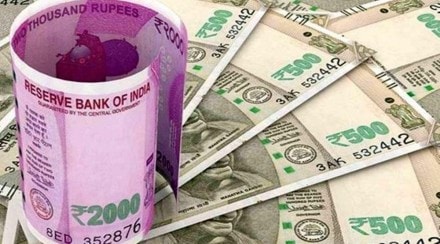The Centre’s asset monetisation drive got to a quick start with public sector brownfield asset generating revenues and investments worth Rs 1 trillion, 12% more than the target set for FY22, thanks to robust performance of the coal and mineral blocks, highway stretches and power transmission lines, sources said. However, the Railways has missed the sectoral target by a wide margin.
In aggregate, revenues and investments mobilised from asset monetisation in FY22 stood at 96,000 crore, which will go up by at least4,000 crore after some additional data is captured. The monetisation target was 88,200 crore for FY22, the first year of the6 trillion four-year National Monetisation Pipeline (NMP).
Coal and mineral mining block auctions led the moentisation in FY22 with 58,700 crore — with coal contributing40,000 crore and other mines 18,700 crore — as against an annual target of just3,394 crore. Opening up of the coal mining sector to private sector helped in auction of 22 coal blocks, award of MDO (mine-developer-and-operator) contracts, etc. Besides coal, various easing of processes helped in auction of 31 mineral blocks (bauxite, copper, limestone, iron ore etc).
In terms of value, the ministry of roads has achieved Rs 23,000 crore by monetising 390 km of roads under Infrastructure Investment Trusts (InvITs) and Transfer-Operate-Transfer (TOT) models, as against the FY22 target of Rs 30,000 crore. The achievement for the last financial year by the roads sector will likely increase a bit as some data are yet to be fully captured, another official said.
The private developers and agencies concerned – NHAI, PowerGrid etc – could use these funds to quicken the pace of their capital expenditures, thereby giving a boost to overall public capex and fixed asset creation in the economy. “The cumulative investment potential over the years on account of monetisation transactions completed during FY22 is estimated at `9 trillion,” an official said.
Ministry of power closed the last financial year with monetisation of of assets worth Rs 9,500 crore compared with the target of Rs 10,470 crore. Bulk of it came from Power Grid, the public sector electricity transmission utility, which undertook monetisation of its first batch of transmission assets under the InvIT model. NHPC also securitised hydel assets worth Rs 1,000 crore.
Railways, along with the NHAI accounts for a major share in the four-year NMP, has collected just Rs 800 crore via monetisation in the last fiscal as against the target of Rs 17,810 crore. The target for railways was to monetise 40 stations in FY22 and permit private trains under PPP model.The NMP seeks to generate upfront revenues and investments, out of operational infrastructure projects, under various innovative long-term lease plans that don’t require the government to cede ownership of the assets much.
Despite railways lacklustre performance, the second phase of NMP in FY23 could be achieved even though the target for the year is a whopping Rs 1.62 trillion, the second official said.Under the NMP, there are four approaches to mobilise funds and estimate the monetisation value – apart from market approach and ‘capex route’, conventional accounting methods of book and enterprise values are also being adopted to gauge the monetisation value.
Under the market approach, the monetisation value is determined on the basis of comparable market transactions. The capex approach is followed for asset classes that may be monetised through public private partnership-based models like highways, ports, airports and power-transmission. Here, capex by the private sector is counted as the monetisation value.
The NMP is in sync with the government’s plan to revert to the path of fiscal consolidation without any lapse of time and create the fiscal heft to finance the Rs 111-trillion National Infrastructure Pipeline and other capital-intensive ventures. The idea is to crowd in private investments in infrastructure by making matching public funds available.
